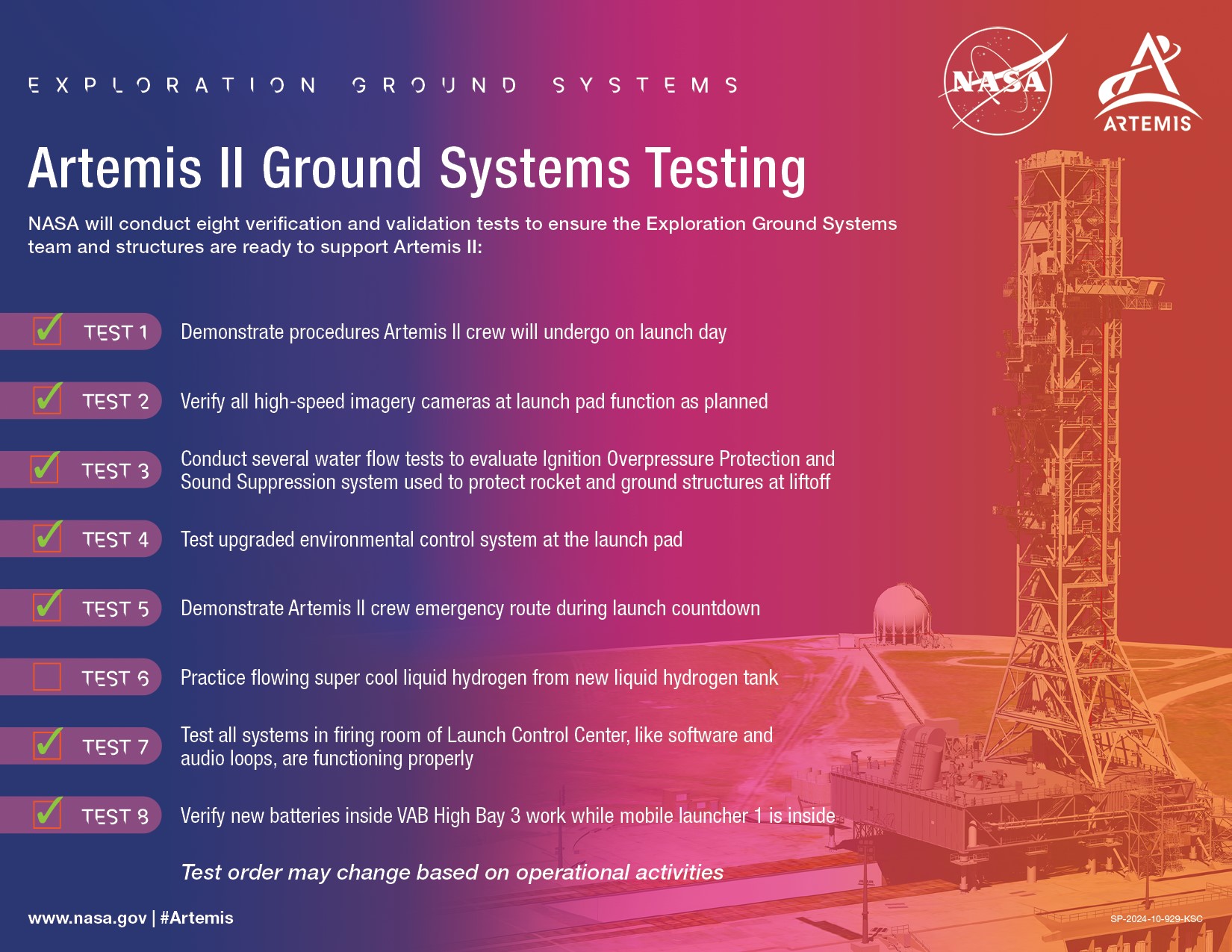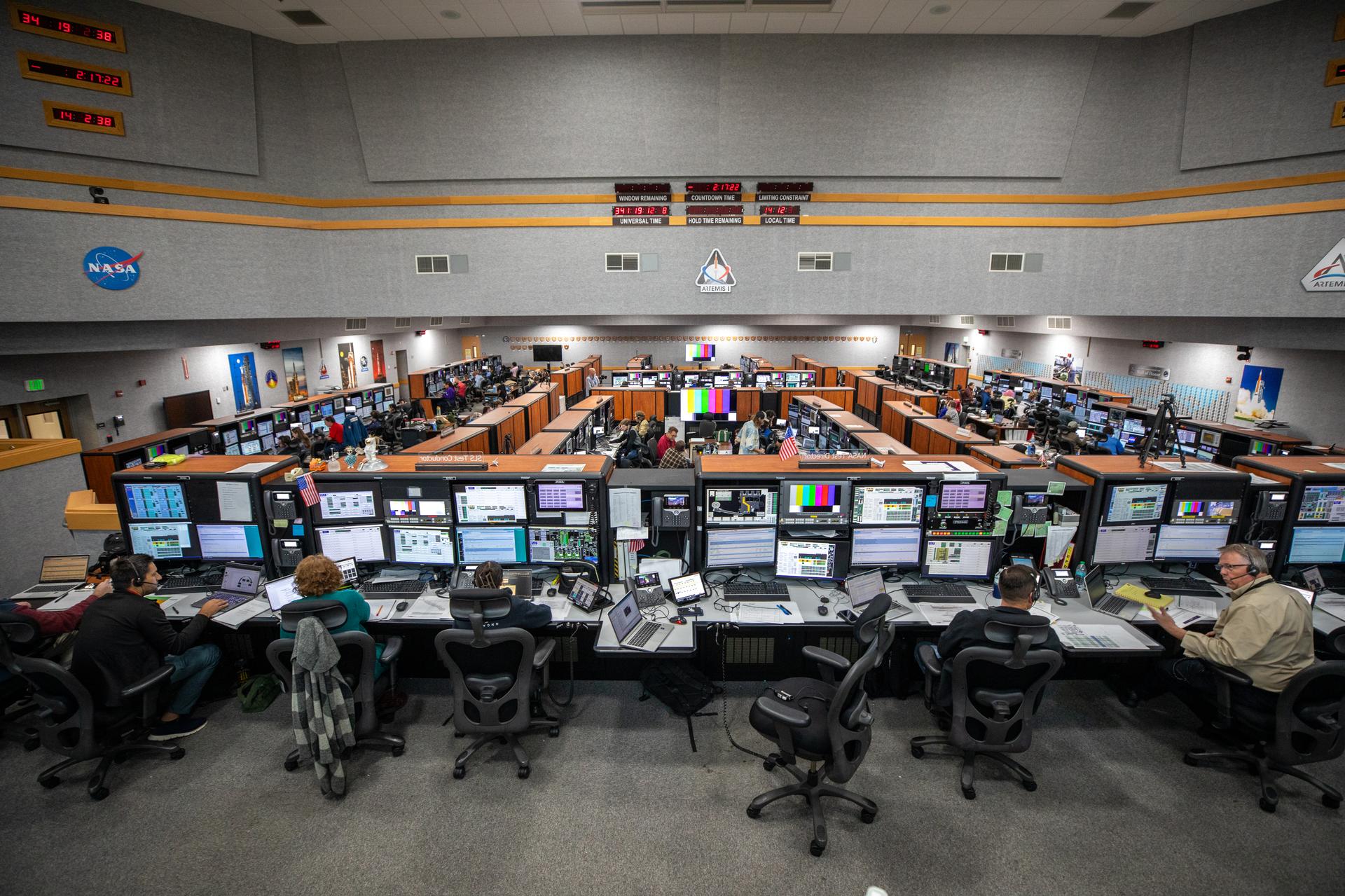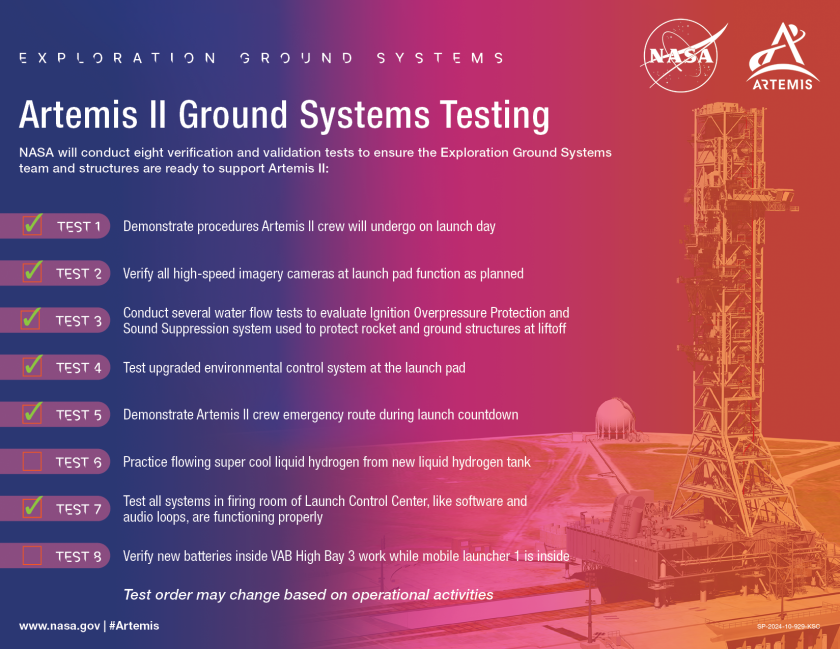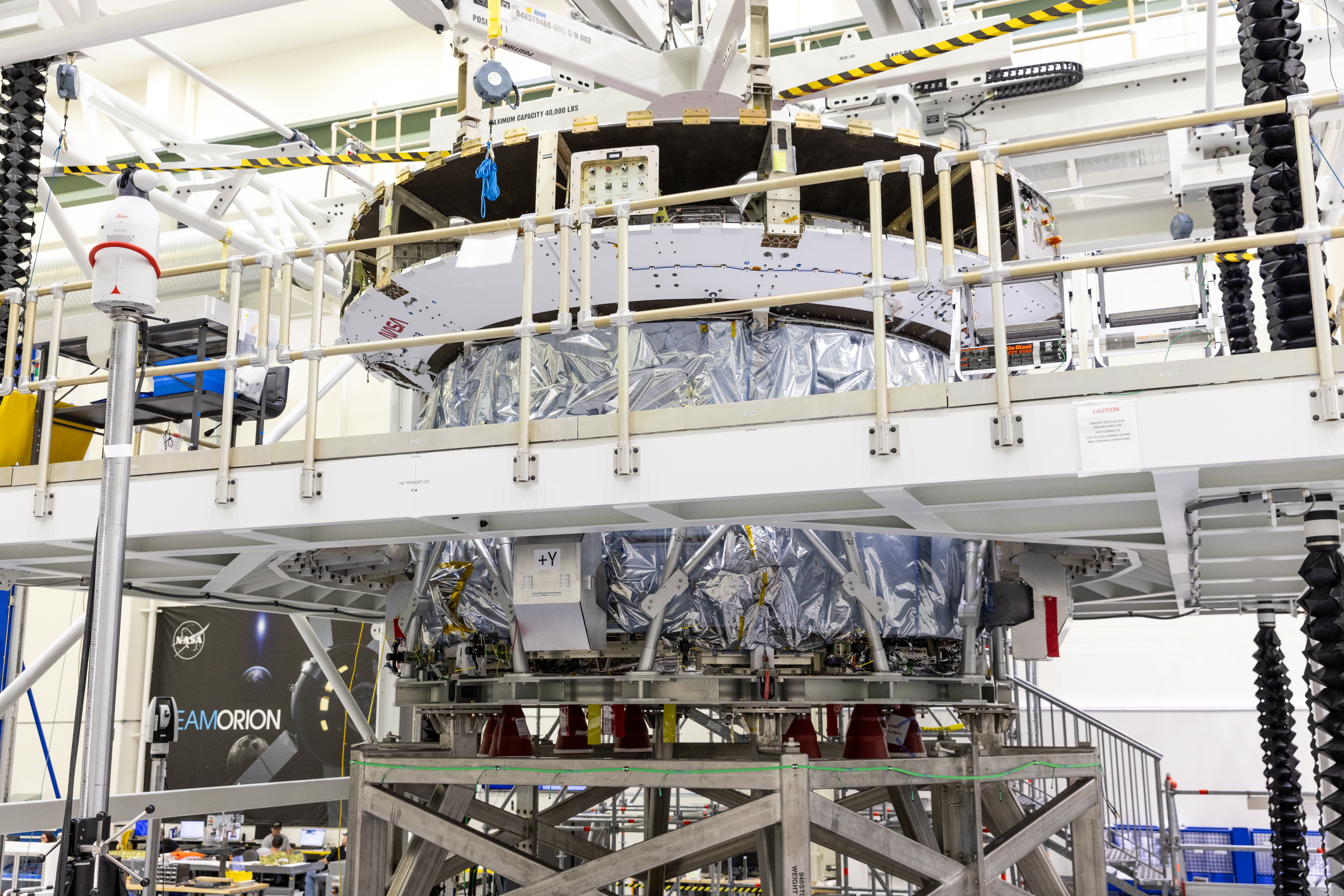
Teams with NASA’s Exploration Ground Systems (EGS) Program at the agency’s Kennedy Space Center in Florida, successfully tested the new uninterruptible power supply for mobile launcher 1 while it’s in Kennedy’s Vehicle Assembly Building (VAB). This marks the next set of integrated ground systems testing the EGS teams are conducting to prepare for the Artemis II crewed mission.
During this test, engineers turned off the power to the mobile launcher and verified new batteries, which are located in High Bay 3 of the VAB, did not negatively impact any systems. These batteries provide power to the mobile launcher, SLS (Space Launch System) rocket and Orion spacecraft and allow teams to safe all systems in the unlikely event the structure loses power while it’s inside the VAB. There are similar batteries that are used for the same purpose at Launch Complex 39B, from which crewed Artemis missions will launch.
The Artemis II test flight will be NASA’s first mission with crew under the Artemis campaign, sending NASA astronauts Reid Wiseman, Victor Glover, and Christina Koch, as well as Canadian Space Agency astronaut Jeremy Hansen, on a 10-day journey around the Moon.







